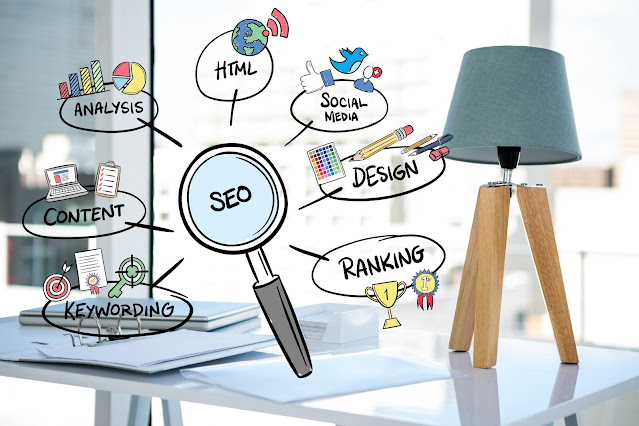 |
| Background Image by rawpixel.com on Freepik |
The process of creating and strengthening your professional services brand is called brand development. We break the process down into three phases,
The first phase of getting your brand strategy right and in line with your business goals is
The second phase is to develop all the brand communication tools you'll need, including your logo, tagline, and website.
The final phase is strengthening your freshly created or upgraded brand.
Your approach to accomplishing these tasks is determined by your brand development strategy. We've divided the brand development plan into 15 steps to simplify the process.
Building a brand creates an entity that links a company with a target market. You must first comprehend the needs of that audience in order to build that connection.
You must come up with a strategy to not basically tell them you have what they want, but also to show how it differs from what they currently have and the rewards it will bring them in a way that establishes trust.
Every company requires a brand strategy, which is what this plan is.
In light of the previous section, this is straightforward. Giving oneself the best opportunity to succeed is important if you intend to market your products or services in order to grow your company.
Due to the complexity of branding, creating a successful strategy requires time and careful planning. Consider these 15 guidelines for creating a successful brand strategy for your business.
 |
| Image by rawpixel.com on Freepik |
What kind of business do you want? Are you intend to raise your products naturally?
The context of your brand development strategy is your whole business strategy, so start here. Your brand will assist you in reaching your goals if you are clear about where you wish to take your company.
 |
| Image by rawpixel.com on Freepik |
In any case, while you choose a brand strategy that will work with your marketing efforts and help you reach your goal, keep your main objectives foremost in your mind.
 |
| Image by lookstudio on Freepik |
In order to function and develop, your business must offer a valuable service that a certain group of customers needs. This group contains the brand's target audience.
Having a well-defined target audience is very essential for companies that are developing quickly and generating a lot of revenue. A more targeted approach leads to a faster rate of growth. The more diverse your target audience is, the less successful your marketing will be.
The secret to successful branding is being able to tap into people's emotions by understanding their concerns and pain points. Modern technology and digital marketing techniques make it simple for you to find and spread brand awareness among your target audience.
Offering specialized services, targeting particular groups, or limiting your attention to only those products that best fulfill the needs of your clients are all aspects of catering to a niche market. Niche marketing is one of the most powerful approaches for any business to grow faster!
Benefits include:
More time and effort to devote to focusing on providing your consumers with the finest possible products, services, and experiences.
Reduced waste of resources.
The capability of charging more for your exclusive skills.
Distinguishing oneself from competitors who target various or more broad audiences
 |
| Image by rawpixel.com on Freepik |
With the help of research, you can grasp the priorities and viewpoints of your target audience, predict their requirements, and create marketing messages. You clearly don't wish to copycat someone else. However, you can learn a lot from their successes, your audience's responses to particular approaches, and even what your competitors aren't doing in terms of branding.
Businesses that perform in-depth research on the statistics of their target customers grow much faster and more profitably. You can look to currently successful businesses for creative ideas and strategic guidance to assist you to stand out from the crowd.
Additionally, it reveals their views on the advantages of your company and your current brand. This significantly lowers the marketing risk associated with building a brand.
 |
| Image by wayhomestudio on Freepik |
When you are aware of your audience, what they want, and your competitors, you can draw a clear picture of the competitive environment in your market. This map could be a useful tool for identifying opportunities and gaps that your brand can take advantage of.
How does your business stand out from the competition and why should potential customers in your target market choose to deal with you?
What do your competitors not offer that your target market needs?
Where do they want a new or better method of doing things?
How can you make improvements?
This is where brand uniqueness begins. By responding to these questions, you can position your brand as an upgrade or an option to the competition, giving your audience a valid reason for selecting your brand over competitive brands.
 |
| Image by pressfoto on Freepik |
Each audience will have different interests in various areas of your brand positioning, even while your basic brand positioning must remain the same for all audiences. The messaging will focus on the topics that matter most to each audience.
Think about running a pizza inspired by unique Italian pizza Your purpose isn't just to make tasty pizzas, it's to deliver a real Italian experience that they can't get anywhere else in the town. Consider the coffee shops Starbucks and Dunkin' Donuts as an example, both sell similar products but they use different brand strategies to target audiences that have quite different requirements. The same may apply to your case.
Each audience will also have certain issues that need to be addressed, and each will require a different kind of evidence to support your messages. All of these requirements must be addressed by your messaging strategy. Making your brand relevant to your target customers requires you to take this crucial step.
 |
| Image by rawpixel.com on Freepik |
You can use the various emotions and reactions that various colors evoke to shape how people interpret and interact with your brand.
- Red — Red symbolizes passion, enthusiasm, and fury. This could indicate the importance and command attention.
- Orange — Orange represents friendliness, energy, and playfulness. It inspires energy.
- Yellow — Yellow might look attention-grabbing or inexpensive, but it also evokes feelings of joy, youth, and optimism.
- Green —Green symbolizes security, progress, wealth, and a connection to nature.
- Blue — Convey dependability and trust.
- Purple — Purple can signify royalty, creativity, and luxury.
- Pink — Pink indicates femininity, innocence, and youth.
- Brown — Brown gives off a rough, earthy, vintage aspect or mood.
- White — White brings images of purity, morality, health, or simplicity.
- Gray — Gray represents neutrality. It might have a quiet, vintage, somber, mysterious, or mature aspect.
- Black — Black has a strong, refined, edgy, opulent, and modern vibe.
.jpg) |
| Image by creativeart on Freepik |
Given where the brand development process is at this point, this phase could seem out of place. But the tagline and the logo are simply ways of communicating the brand.
Keep in mind that your name, logo, and tagline do not define your brand. They are a part of your brand identity, which is how you communicate with others or represent your brand.
The name, logo, and tagline are not for you. They are for your marketplace and should be judged on how well they communicate.
The brand name and tagline are created so late in the process due to the important roles they play in ensuring that your consumer remembers your brand and understand why it is important. Having a unique brand is also helpful in conducting digital marketing campaigns and keeping your brand standing out from the other brands. A brand's name and logo should be selected with care.
 |
| Image by rawpixel.com on Freepik |
Remember that your brand strength is driven by both reputation and visibility. Increasing visibility alone, without strengthening your reputation, is rarely successful.
A well-maintained business blog can bring many benefits including increased online visibility and an increase in sales. Blogging is an excellent way to communicate the unique personality and intent of your company. Just be sure to choose topics that are relevant to your audience and make your posts easy to read.
That’s why traditional “awareness-building” advertising or sponsorships so often yield disappointing results. Content marketing is also a part of digital marketing. The approaches used in digital marketing can spread your brand on online platforms quickly. On the other hand, content marketing has both visibility and reputation at the same time. It is also the perfect way to make your brand relevant to your target audiences.
 |
| Image by rawpixel.com on Freepik |
Increasingly this marketing toolkit also includes videos. Popular video topics include firm overviews, case studies, or “meet the partner” videos. Key service offerings are also very useful. If prepared appropriately, these tools serve not only a business development function but also are important for brand development.
 |
| Image by lyashenko on Freepik |
Additionally, happy customers can act as mini-marketers for your company by sharing with others about the great interactions, leaving reviews on your site, and referring you to other people who share their interests.
Therefore, consider more than simply how you can provide a service that is at least as good as or slightly better than what your competitors do. Provide your consumers with the optimal experience.
 |
| Image by rawpixel.com on Freepik |
Your brand image starts with you, but it ultimately depends on how others see your company and the decisions they make as a result.
You can positively influence how your audience understands and responds to your brand by actively developing every aspect of it, which will also increase your marketing. To grow your brand you can take use of digital marketing strategies as well. Involve technology rather than traditional strategies. Digital marketing plays a key role in brand development.
Setting your brand strategy as the highest priority will benefit your company regardless of its size, age, or stage of growth. Do you desire greater audience interactions, a better reputation, more visibility, and more income? If so, devote the necessary time to this essential part of your small business plan.



